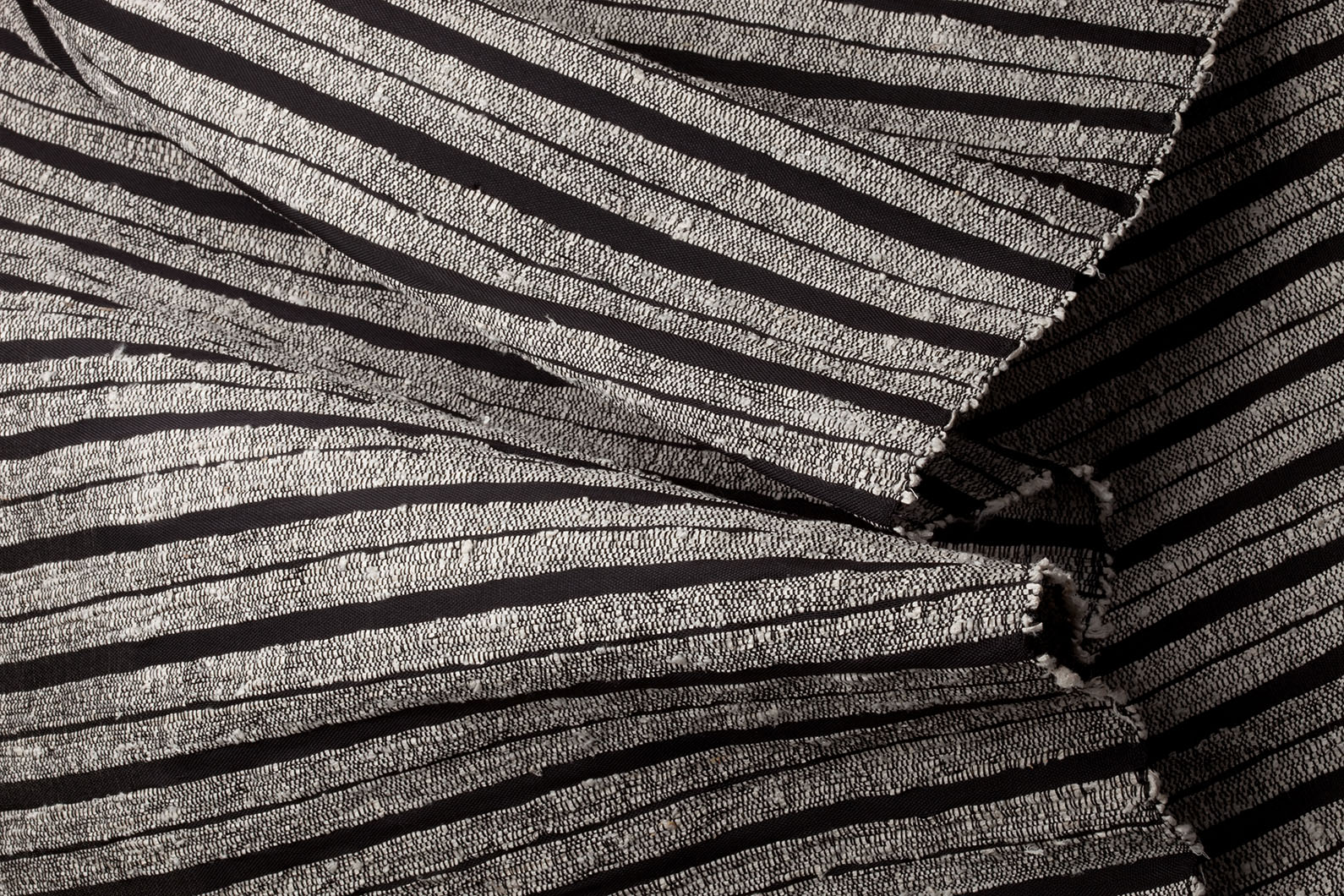BY: BRENNA PLADSEN
In the latest instalment of exhibitions I wish I could go to we have Scraps: Fashion, Textiles and Creative Reuse at the Cooper Hewitt, Smithsonian Design Museum. Scraps is currently on view until April 16, 2017. The exhibit highlighted, in one of the Cooper Hewitt’s small temporary exhibition spaces, is global in scope and features works from Italian label Riedzioni, founded by Luisa Cevese; Christina Kim, founder of dosa, inc., in Los Angeles; and Reiko Sudo, of Japanese textile firm NUNO.
Each designer interrupts the typical mass production cycle at a different point to produce luxury products from the cast offs of a notoriously wasteful industry. While all three companies are commercially successfully, their approach towards their shared material, pre-consumer industrial textile waste created during garment manufacturing, and aesthetics differ dramatically. When placed together, they demonstrate differing but viable approaches to reducing waste in contemporary manufacturing.
In the latest instalment of exhibitions I wish I could go to we have Scraps: Fashion, Textiles and Creative Reuse at the Cooper Hewitt, Smithsonian Design Museum. Scraps is currently on view until April 16, 2017. The exhibit highlighted, in one of the Cooper Hewitt’s small temporary exhibition spaces, is global in scope and features works from Italian label Riedzioni, founded by Luisa Cevese; Christina Kim, founder of dosa, inc., in Los Angeles; and Reiko Sudo, of Japanese textile firm NUNO.
 |
| Installation View of Scraps: Fashion,Textiles, and Creative Reuse. Photo credit: Cooper Hewitt (source) |
 |
NUNO textile Kibiso Stripe from 2008. Designed by Reiko Sudo. NUNO uses materials usually discarded in the silk production process to make their textiles.Photo credit: Matt Flynn for the Smithsonian Institution (source) |
 |
| dosa skirt, 2008. Desiged by Christina Kim. This particular skirt is made from material discarded during industrial garment making. There is also a line made from the discarded materials used to make these garments. Photo credit: dosa (source) |
 |
| Large rectangular bag and very small bag by Riedizioni. 2013. Luisa Ceverse, under the label Riedizioni, uses the discarded edges off rolls of silk and other waste textiles to create patterns in polyurethane. Photo credit: Riedizioni (source) |
There are two niggling thoughts that demand I address them. The first is to point at the tapestries of Hannah Ryggen and the works featured in Soft Monuments at KODE in Bergen as other examples of textiles as a feminine medium for political art, in part because of its status as craft or otherwise outside art. But I’ll leave/challenge Natania to tackle that in a She’s My Muse.
The second thought is more a series of questions: where else could this exhibit live? Where can we celebrate and worry at contemporary society before it becomes history?
The featured creators in Scraps point towards an answer. These three designers were selected in part because of the longevity of their environmentally motivated design practice. [source] This history is also closely tied with the art museum and gallery sector. NUNO has a decades long affair with museum exhibitions, including another show at the Cooper Hewitt in 1990. [source] Riedzoni products slide nicely into that art museum store niche. [source] dosa, the newest of the three companies, has already done collaborations with LACMA and a Pulitzer Art Foundation.
 |
| Installation view of dosa's floor pillows for the Pulitzer Art Foundation in St. Louis. The pillows are patched together and some are dyed with tea! Photo credit: Carly Hilo for the Pulitzer (source) |
So we see two potential roles of palaces of art: exhibitors and incubators/clients. Inside of the museum exhibition, visitors are asked to contemplate objects outside of their immediate use value, to take a moment and consider the networks and systems that created them, move them, and inscribe them with value. In the case of new objects, this is one place where this can be done without the immediate question of how this thing can be bought and consumed, where we can take a moment to think about how we fit into larger systems and our actions reverberate out into the world.
Final notes: if you'd like more content, including traditional upcycling textile techniques, Scraps includes blog posts by textile researcher Magali An Berthon. It looks like the digital content is updated regularly, including today's post on greenwashing! If you're on the cusp of a closet clean out but don't want to contribute to landfill, try any of these charities and shops if you're in the Toronto area.
Resources
Drain, Kelsey. (2016) "'Scraps: Fashion, Textiles And Creative Reuse' Exhibit To Debut At Cooper Hewitt Design Museum." Fashion Times.
Hoory, Leeron. (2016) "Sustainable Solutions to the Clothing Industry’s Staggering Waste Problem." Hyperallergic.


No comments:
Post a Comment
Note: only a member of this blog may post a comment.